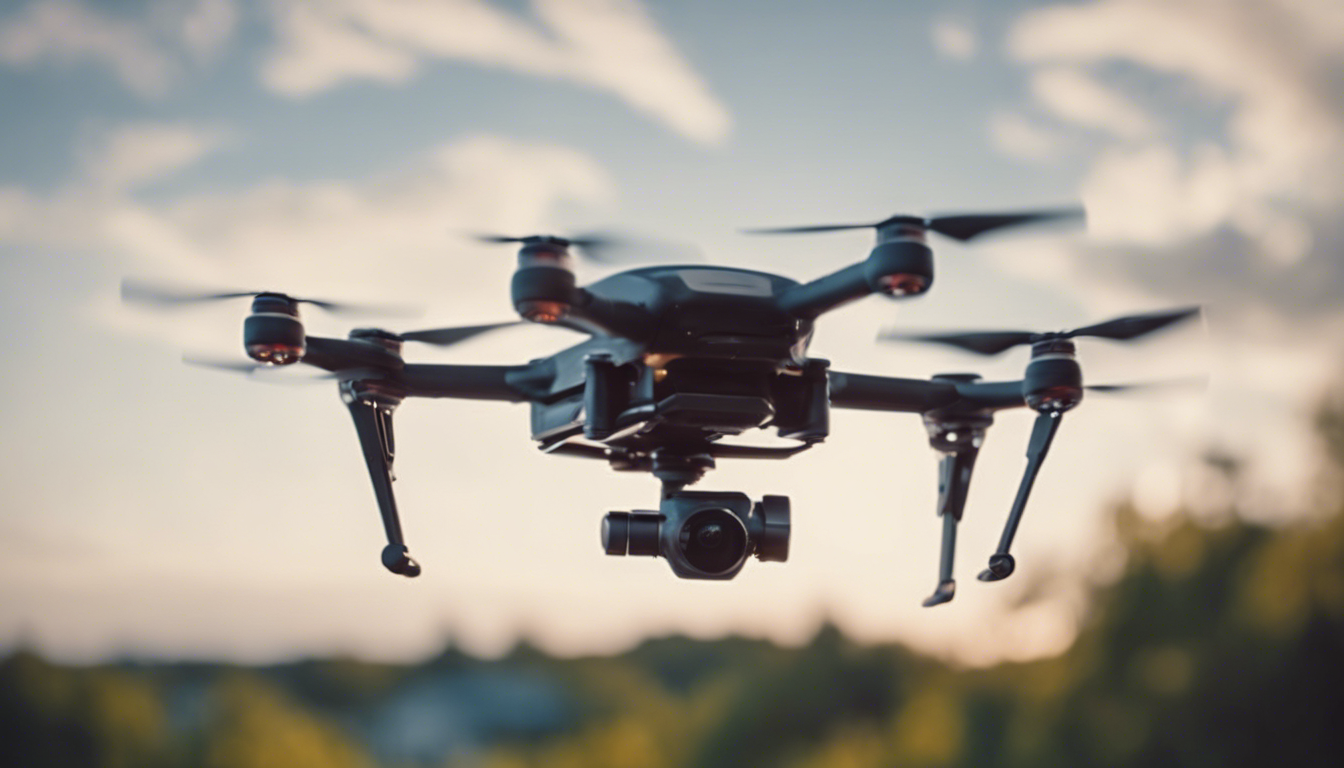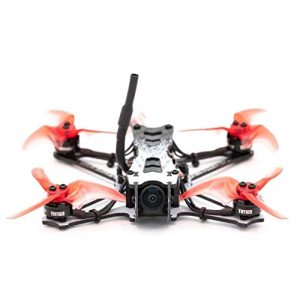
Overview of Drone Certification Requirements
So, you’ve got your shiny new drone and you’re all set to take to the skies. Not so fast, ace! Before you start buzzing the neighborhood pets or executing dizzying aerial acrobatics, there’s a bit of red tape to wade through: drone certification requirements. Yes, you heard that right, operating a drone isn’t quite as easy as flying a kite–and for good reason. With concerns like privacy, safety, and national security in the mix, it’s not all fun and games in drone-land.
Now, depending on the weight of your drone and what you plan to do with it, you might need to go through a certification process. If your drone is more than a feather-light gizmo, but less than a 55-pound unmanned behemoth, you are going to need to pay attention to the Federal Aviation Administration (FAA) rules. And, should your ambitions soar beyond just recreational flying, to perhaps capturing breathtaking aerial photography or inspecting rooftops, certification is your ticket to legitimacy.
For hobbyist pilots, the FAA has drafted a set of guidelines that are as easy to follow as a recipe for instant noodles. Still, you must register your drone if it crosses the weight threshold, mark your registration number visibly on the contraption, and pass an aeronautical knowledge and safety test. Did you just groan at the mention of a test? Fear not, this isn’t the SATs, and it’s actually pretty straightforward.
Commercial drone pilots have a heavier burden to bear, fitting since their drones are often beefier too. You need to get certified under the FAA’s Part 107 regulations. Consider of it as a driver’s license for drones. You’ll have to be at least 16 years old, proficient in English, in a good physical and mental condition to fly, and pass the actual knowledge test at an FAA-approved testing center. While that may sound like a tall order, it’s essentially making sure you’re not going to inadvertently play a game of chicken with a manned aircraft.
Part of the certification process involves learning about operating requirements, flight restrictions, and how to zip your drone through the skies without causing a ruckus. You’ll need to understand airspace classifications, weather patterns that could affect flight, and a myriad of safety practices. Once you’ve cleared this hurdle, you’re almost ready to get that bird airborne.
These requirements aren’t arbitrary hoops designed by fun police; they have a purpose. With the sky getting more crowded by the minute with fellow drone enthusiasts, certification ensures that everyone is on the same page. It’s like a harmonious aerial ballet instead of a chaotic free-for-all. And believe it or not, understanding these rules can actually enhance your droning experience. Imagine knowing the best times to fly for that perfect shot or how to handle your drone when the wind picks up; that’s power right there, the power of knowledge.
It is all about keeping you, your drone, and the public safe, so while the process of getting certified may initially feel like a dampener on your high-flying aspirations, it pays off in the long ride. Plus, there’s nothing quite like the rest assured that comes with knowing you are completely legit as you send your mechanical bird into the sunset for that killer panorama.
The Steps Involved in Drone Certification
Let’s dive into the nitty-gritty and unwrap the steps for getting your drone certification, which is kind of like getting your wings, except you don’t have to leave the ground. Imagine the whole thing as a virtual obstacle course, where each step gets you closer to that golden ticket to fly the not-so-friendly skies.
First off, hit the books (or the webpages, because who uses books these days?). You are about to become a student again, but this isn’t calculus. You’re studying up on the rules of the air, which are more like life hacks to keep you from turning your expensive flying machine into an accidental lawn dart. You’ll dive into learning about controlled and uncontrolled airspace, how not to be “that guy” who interferes with emergency response efforts, and what to do if your drone decides to take a leisurely jaunt on its own.
Next comes the gateway to glory: the knowledge test. This isn’t like those pop quizzes you used to dread—imagine it more like a trivia night where all the questions are about drones and you’re aiming to be the MVP. Don’t feel blue if you’re not a test-taking titan; there are online courses and heaps of study guides floating around that practically give you the answers. Okay, not literally, but they sure make it seem less daunting.
Found an FAA-approved testing center? Great. Schedule that test and show up with your game face on. No need to fret; you’re ready to slay that dragon with all your newfound knowledge. The test will quiz you on everything from safety procedures to drone regulations and even how to read a weather report. Why? Because nobody wants to be piloting their drone when it decides to embrace its inner kite during a sudden gust of wind. Once you pass, it’s high-fives all around.
Chances are, if you’re a hobbyist, that is where you can do your happy dance, but if you’re planning to go pro, there’s one more leap to make. You see, flying drones for fun is like splashing in the kiddie pool, but doing it for work is the deep end. That’s why you’ll need to apply for a Remote Pilot Certificate from the FAA. It’s your “official drone pilot” badge, proof to the world that you’ve got skills. And don’t forget, you’ll need to keep these creds up-to-date with a recurrent test every couple of years. It’s like renewing your vows, but with your drone instead of a partner.
With your certificate in hand, it’s time to register your drone with the FAA, because they like to keep track of these flying critters. It’s simple, really—just a few clicks online, a tiny fee, and voilà, you’re set. Don’t forget to slap that registration number on your drone in a spot that’s easy to read, unless you want an unexpected visit from the authorities.
And now for the final act, making sure your gear is ready for the limelight. Just like you wouldn’t drive a car without checking the brakes, you should give your drone a once-over before each flight. Trust me, it’s way less embarrassing to catch an unruly propeller on the ground than it is to explain why your drone is hanging from a tree branch.
So there you have it, the yellow brick road to drone certification. It’s a small adventure, a bit of a time investment, sure, but once you’ve got it all squared away, the sky is (quite literally) the limit. You’ll have the confidence to fly without looking over your shoulder for this drone police, and you’ll be the savviest pilot at the park. Happy flying!
Common Challenges and Solutions in Drone Certification
Face it, no journey to drone pilot stardom is without its turbulence, and the certification process can sometimes feel like trying to play a flight simulator on expert mode with all the controls inverted. But fret not, because every challenge has a workaround faster than you can say “controlled airspace”.
First up, studying for that knowledge test can be as dry as week-old bread. You might find yourself staring blankly at airspace classifications and weather patterns until the words dance off the page. The trick here? Don’t go solo. Grab study buddies, form a study group, or join online forums. There are countless cheat sheets and mnemonic devices experts have crafted to make memorization a breeze. Or why not gamify your study sessions? Turn those FAA regulations into flashcards and challenge a friend. Whoever loses has to buy the next round of battery packs.
One challenge that often creeps up on unsuspecting drone enthusiasts is the dreaded test anxiety. You know the material inside-out, but as soon as you sit down in that testing center, it’s as if someone wiped your memory card clean. The solution: mock exams. Think of them as scrimmage matches before the big game. Most online courses offer practice tests that mimic the real deal. Go through them, time yourself, and get that confidence up. Remember, it is not rocket science, it is drone science – less complex and way cooler.
And what about the logistical hurdles? Sometimes life is busy, and finding an FAA-approved testing center or scheduling a testing slot can seem like a quest for the Holy Grail. Here’s a pro tip: Online scheduling is your friend. It is like ordering a pizza – quick, easy, and satisfying. If you are struggling to find a center, there’s a map on the FAA’s website that’ll point you to the nearest one as smoothly as a drone glides on a calm day.
Thinking of the ongoing commitment required for maintaining certification might also have you breaking a sweat. After all, regulations can change faster than the latest tech trend. But staying current is less of a hassle and more of an opportunity to stay ahead of the game. Make sure to bookmark the FAA’s official site and opt-in for updates. It’s like following your favorite influencer but for drone regulations.
Finally, a word on gear checks: keeping your drone in tip-top shape can feel like a chore, especially when you are itching to get airborne. But ponder this your pre-flight zen time. Create a checklist and methodically tap into that inner peace as you ensure your rotors, batteries, and controls are in perfect harmony. This ritual not only prevents unwanted tree hugging incidents but also prolongs the life of your aerial ally.
To sum it up, the path to drone certification is dotted with a few speed bumps and the occasional pothole, but these are far from insurmountable. With every challenge comes a clever detour, ensuring your journey to mastering the skies is not only successful but actually quite enjoyable. So, chart your course, set your sights high, and let the adventures begin!
